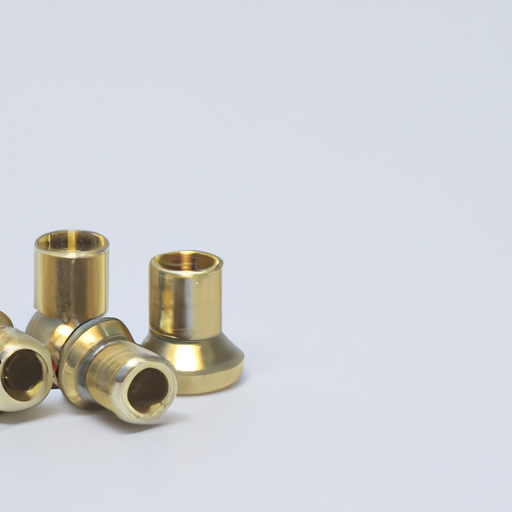Round connectors are a crucial component in various industries, including automotive, aerospace, and electronics. These connectors are used to establish electrical connections between different components, ensuring seamless communication and power transmission. As technology continues to advance, the manufacturing processes for round connectors have also evolved to meet the increasing demands for efficiency, reliability, and performance.

Another cutting-edge manufacturing process for round connectors is additive manufacturing, also known as 3D printing. Additive manufacturing allows for the creation of complex geometries and customized designs that are not possible with traditional manufacturing methods. This technology enables manufacturers to produce round connectors with intricate shapes, lightweight materials, and improved performance characteristics. Additionally, 3D printing reduces material waste and energy consumption, making it a more sustainable manufacturing option.
Furthermore, advancements in materials science have led to the development of new materials for round connectors. High-performance polymers, such as PEEK and PTFE, are being used to create connectors that are lightweight, durable, and resistant to harsh environmental conditions. These materials offer superior electrical insulation properties, high temperature resistance, and excellent chemical compatibility, making them ideal for demanding applications in industries such as aerospace and defense.
In addition to materials, surface treatment technologies have also advanced in recent years, enhancing the performance and reliability of round connectors. Surface treatments such as plating, coating, and anodizing improve the conductivity, corrosion resistance, and wear resistance of connectors, ensuring long-term reliability in harsh operating environments. These treatments also enhance the aesthetics of the connectors, making them more visually appealing and easier to handle.
Quality control and testing processes have also seen significant improvements in round connector manufacturing. Advanced testing equipment, such as automated inspection systems and high-speed testing machines, are used to ensure the quality and reliability of connectors before they are shipped to customers. These testing processes help identify any defects or inconsistencies in the connectors, allowing manufacturers to address issues early on and prevent costly recalls or failures in the field.
Overall, the latest manufacturing processes for round connectors focus on improving efficiency, reliability, and performance while reducing costs and lead times. Automation, additive manufacturing, advanced materials, surface treatments, and quality control measures are just a few of the innovations driving the evolution of round connector manufacturing. As technology continues to advance, we can expect to see even more advancements in the production of round connectors, further enhancing their capabilities and expanding their applications in various industries.
Round connectors are a crucial component in various industries, including automotive, aerospace, and electronics. These connectors are used to establish electrical connections between different components, ensuring seamless communication and power transmission. As technology continues to advance, the manufacturing processes for round connectors have also evolved to meet the increasing demands for efficiency, reliability, and performance.

Another cutting-edge manufacturing process for round connectors is additive manufacturing, also known as 3D printing. Additive manufacturing allows for the creation of complex geometries and customized designs that are not possible with traditional manufacturing methods. This technology enables manufacturers to produce round connectors with intricate shapes, lightweight materials, and improved performance characteristics. Additionally, 3D printing reduces material waste and energy consumption, making it a more sustainable manufacturing option.
Furthermore, advancements in materials science have led to the development of new materials for round connectors. High-performance polymers, such as PEEK and PTFE, are being used to create connectors that are lightweight, durable, and resistant to harsh environmental conditions. These materials offer superior electrical insulation properties, high temperature resistance, and excellent chemical compatibility, making them ideal for demanding applications in industries such as aerospace and defense.
In addition to materials, surface treatment technologies have also advanced in recent years, enhancing the performance and reliability of round connectors. Surface treatments such as plating, coating, and anodizing improve the conductivity, corrosion resistance, and wear resistance of connectors, ensuring long-term reliability in harsh operating environments. These treatments also enhance the aesthetics of the connectors, making them more visually appealing and easier to handle.
Quality control and testing processes have also seen significant improvements in round connector manufacturing. Advanced testing equipment, such as automated inspection systems and high-speed testing machines, are used to ensure the quality and reliability of connectors before they are shipped to customers. These testing processes help identify any defects or inconsistencies in the connectors, allowing manufacturers to address issues early on and prevent costly recalls or failures in the field.
Overall, the latest manufacturing processes for round connectors focus on improving efficiency, reliability, and performance while reducing costs and lead times. Automation, additive manufacturing, advanced materials, surface treatments, and quality control measures are just a few of the innovations driving the evolution of round connector manufacturing. As technology continues to advance, we can expect to see even more advancements in the production of round connectors, further enhancing their capabilities and expanding their applications in various industries.